Bruce Springsteen: the 100 most inspiring musicians of all time
American singer, songwriter, and bandleader Bruce Springsteen (b. Sept. 23, 1949, Freehold, N.J., U.S.) became the archetypal rock performer of the 1970s and ’80s.
Bruce Springsteen grew up in Freehold, a mill town where his father worked as a laborer. His rebellious and artistic side led him to the nearby Jersey shore, where his imagination was sparked by the rock band scene and the boardwalk life, high and low. After an apprenticeship in bar bands on the mid-Atlantic coast, Springsteen turned himself into a solo singer-songwriter in 1972 and auditioned for talent scout John Hammond, Sr., who immediately signed him to Columbia Records.

His first two albums, released in 1973, reflect folk rock, soul, and rhythm-and-blues influences, especially those of Van Morrison, Bob Dylan, and Stax/ Volt Records. Springsteen’s voice, a rough baritone that he used to shout on up-tempo numbers and to more sensual effect on slower songs, was shown to good effect here, but his sometimes spectacular guitar playing, which ranged from dense power chord effects to straight 1950s rock and roll, had to be downplayed to fit the singersongwriter format.
With his third album, Born to Run (1975), Springsteen
transformed into a full-fledged rock and roller, heavily
indebted to Phil Spector and Roy Orbison. The album, a
diurnal song cycle, was a sensation even before it hit the
shelves; indeed, the week of the album’s release, Columbia’s
public relations campaign landed Springsteen on the
covers of both Time and Newsweek. Three years passed
before the follow-up, the darker, tougher Darkness on the
Edge of Town (1978), appeared. With “Hungry Heart,” from
The River (1980), Springsteen finally scored an international
hit single.
By then, however, he was best known for his stage shows, three- and four-hour extravaganzas with his E Street Band that blended rock, folk, and soul with dramatic intensity and exuberant humor. The band, a crew of
mixed stereotypes —from rock-and-roll bandit to cool music professional— was more like a gang than a musical unit, apparently held together by little other than faith in its leader.

Bruce Springsteen’s refusal, after Born to Run, to cooperate with much of the record company’s public relations and marketing machinery, coupled with his painstaking recording process and the draining live shows, helped earn his reputation as a performer of principle as well as of power and popularity. Nebraska (1982), a stark set of acoustic songs, most in some way concerned with death, was an unusual interlude.
It was Born in the U.S.A. (1984) and his subsequent 18-month world tour that cinched Springsteen’s reputation as the preeminent writer-performer of his rock-and-roll period.
Springsteen’s social perspective has been distinctly working-class throughout his career, a point emphasized both by his 1995 album, The Ghost of Tom Joad, which concerned itself with the economically and spiritually destitute in America and by his 1994 hit single (his first in eight
years), the AIDS-related “Streets of Philadelphia,” from the film Philadelphia, for which he won both an Academy Award and a Grammy Award.
The other side of Springsteen’s work is reflected in the albums that he produced in the period beginning with Tunnel of Love (1987) and including Human Touch and Lucky Town (released simultaneously in 1992). The songs on these albums are intensely personal reflections on intimate relationships.
In general, they have not been as popular. Bridging all this is the five-record set Bruce Springsteen and the E Street Band Live 1975–1985 (1986), which captures as much of his highly visual stage show of that period as can be rendered in a sole audio form. The breakup of the
E Street Band in 1989 and general trends in pop music fashion curbed Springsteen’s popularity.
In 1998, he put together a box set, Tracks, consisting for the most part of leftover material that had failed to make the cut on his albums with the band. This grandiose gesture established him as prolix beyond all but a couple of peers. Sales of Tracks were trivial compared with those for Live.
In 1999 Springsteen reunited the E Street Band. They appeared with him when he alone was inducted into the Rock and Roll Hall of Fame in early 1999, then spent a year touring with him, resulting in a live album (Live in
New York City [2001]) but only a handful of new songs.
On Sept. 21, 2001, Springsteen performed the national debut of his song “My City of Ruins” on a television special. It was written about Asbury Park but took on a different tone in the wake of the September 11 attacks. That tone continued on The Rising, his 2002 album with the E Street Band, which weighed the consequences of the attacks and their aftermath. Beginning on the Rising tour, Springsteen became an adamant critic of the U.S. government, especially regarding the Iraq War.
Springsteen’s 2005 solo tour, following the release of the Devils and Dust album, explored the full depth of his song catalog and continued his opposition to the administration’s policies.
We Shall Overcome: The Seeger Sessions (2006) took a turn unanticipated by even the closest Springsteen observers. He made the recording over a period of 10 years with a folk-roots band and a horn section.
It featured traditional American folk songs (“Oh, Mary, Don’t You Weep,” “Froggie Went A-Courtin’,” and “John Henry”) as well as songs associated with its inspiration, Pete Seeger (“My Oklahoma Home,” “How Can I Keep from Singing,” and “Bring ’Em Home”). Springsteen’s tour of the United States and Europe in 2006 featured a 20-piece band.
Magic (2007), another E Street Band album, sometimes spoke metaphorically and sometimes explicitly in opposition to the war and government intrusions on civil liberties. Springsteen continued his commentary through a worldwide tour with the E Street Band in 2007 and 2008.
After the April 2008 death of the E Street Band organist and accordionist Danny Federici from melanoma, the band’s playing acquired a darker urgency of tone. The later stages of the Magic tour featured arguably the most assertive, inspired playing Springsteen and the group had ever done.
Please, subscribe to our Library.
If you are already a subscriber, please, check our NEW SCORES’ page every month for new sheet music. THANK YOU!
Working on a Dream, released in early 2009, concerned itself lyrically with thoughts of love and life, how fleeting both are and what it takes to stay the course. The music on the album was a much more sophisticated version of what Springsteen had done on his first two albums, with a greater emphasis on harmony, especially vocal harmonies characteristic of the later work of the Beach Boys. In the lyrics, Springsteen’s knack for particular detail served him well.
On Feb. 1, 2009, Springsteen and the band were the featured entertainment at halftime of Super Bowl XLIII; with an average viewership of 98.7 million, the game was the most-watched televised sports event in American history.
Many fans and much of the press criticized Springsteen for commercializing himself this way. But in the aftermath, it was generally agreed that he had managed to condense the structure, message, humour, and athleticism of his live show into the 12 minutes allotted. On the largest popular culture platform available, Springsteen established that some rock artists remained determined to sustain their vitality and creative ambitions all the way to the end.
Bruce Springsteen’s Sheet Music download here.
Bruce Springsteen – Born In The U.S.A. (Full Album)1984
Track Listing
All tracks are written by Bruce Springsteen.
Side one
1.”Born in the U.S.A.”
2.”Cover Me”
3.”Darlington County”
4.”Working on the Highway”
5.”Downbound Train”
6.”I’m on Fire”
Side Two
7.”No Surrender”
8.”Bobby Jean”
9.”I’m Goin’ Down”
10.”Glory Days”
11.”Dancing in the Dark”
12.”My Hometown”
Personnel
Bruce Springsteen – lead vocals, lead guitar, acoustic guitar
The E Street Band
Roy Bittan – piano, synthesizer, background vocals
Clarence Clemons – saxophone, percussion, background vocals
Danny Federici – Hammond organ, glockenspiel, piano on “Born in the U.S.A.”
Garry Tallent – bass guitar, background vocals
Steven Van Zandt – rhythm guitar, acoustic guitar, mandolin, harmony vocals
Max Weinberg – drums, background vocals
Additional musicians
Richie “La Bamba” Rosenberg – background vocals on “Cover Me” and “No Surrender”
Ruth Davis – background vocals on “My Hometown”
Browse in the Library:
| Artist or Composer / Score name | Cover | List of Contents |
|---|---|---|
| Bach J.S. Cello Suite No. 6 arr. piano solo by Joachim Raff |
 |
|
| Bach J.S. Cello Suite No.1 arr. for piano solo |
 |
|
| Bach J.S. Das Musikalisches Opfer BWV 1070 |
 |
|
| Bach J.S. Fifield Transcription Cantata BWV 147 Jesu, Joy of Man’s Desiring piano solo |
 |
|
| Bach J.S. Harpsichord Concerto A-major arr. 2 pianos | ||
| Bach J.S. J.S.- Das Wohltemperierte Klavier I (Urtext) |
 |
|
| Bach J.S. Marcello – BWV 974 Concert no. 3 | ||
| Bach J.S. My First Book of Bach favorite pieces in easy piano arrangements by D. Dutkanicz |
 |
Bach J.S. My First Book of Bach favorite pieces in easy piano arrangements by D. Dutkanicz |
| Bach J.S. Parodi Siciliano from BWV 1031 Piano solo transcription |
 |
|
| Bach J.S. Prelude XXIV | ||
| Bach J.S. Ricercar 6 BWV 1079 from “The Musical Offering | ||
| Bach J.S. Sarabande for cello | ||
| Bach J.S. Siciliano from BWV 1031 Piano solo transcription by Eugen D’Albert |
 |
|
| Bach J.S. Ten Choral Preludes KiV B 27 | ||
| BACH J.S. The Art Of Fugue Bach Fugues For Keyboard, 1715 1750 |
 |
|
| BACH J.S. The little music book of Anna Magdalena (20 easy pieces) |
 |
|
| Bach J.S. Toccata & Fugue Dminor for Piano |
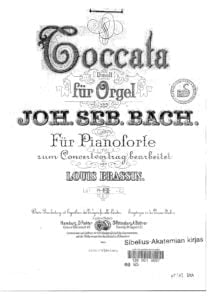 |
|
| Bach J.S. Two Transcriptions Of St. Matthew Passion For Piano Solo |
 |
|
| Bach J.S. Two-Voice Inventions |
 |
|
| Bach J.S.-Busoni BVB36 Prelude Fugue and Allegro BWV998 | ||
| Bach J.S.-Busoni BWV 933-938 | ||
| Bach J.S.-Busoni Prelude in C minor BWV 999 | ||
| Bach J.S.-BWV 1055 4 hands | ||
| Bach J.S.-Choral-BWV-639-Transcr-Busoni | ||
| Bach J.S.-Lipatti – Two Transcriptions of Bach J.S.’s Cantatas 208 | Bach-Lipatti – Two Transcriptions of Bach’s Cantatas 208 | |
| Bach J.S.-Petri – Cantata 208 “Sheep May Safely Graze” Piano solo arr. | Bach-Petri – Cantata 208 Sheep May Safely Graze | |
| Bach J.S.-Siloti- Andante from Sonata for Solo Violin BWV 1003 | ||
| Bach JS “Sheep May Safely Graze” from Cantata 208 (easy piano) |
 |
|
| Bach Liszt Prelude & Fugue In A Minor, Bwv 543 |
 |
|
| BACH Master Musicians Series by Malcom Boyd (eBook) Biography |
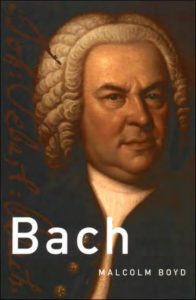 |
|
| Bach Prelude Iv Bwv 849 Wtc I (Musescore File).mscz | ||
| Bach The Goldberg Variations Cambridge Music Handbooks (eBook) |
 |
|
| Bach The Goldberg Variations Cambridge Un. Press (Book) |
 |
|
| Bach The New Bach Reader A Life Of Johann Sebastian Bach In Letters And Documents (Arthur Mendel Hans T. David Christoph Wolff) Book |
 |
|
| Bach Toccata And Fugue In D Minor (Piano Solo) (Musescore File).mscz | ||
| Bach Toccata and Fugue in D Minor BWV 565 (Piano solo arr.) |
 |
|
| Bach Toccata And Fugue In D Minor Bwv 565 (Piano Solo Arr.) (Musescore File).mscz | ||
| Bach Two Part Inventions (No. 1 Bwv 772) (Musescore File).mscz | ||
| Bach-Bauer Die Seele Ruht..Cantata 127 for piano solo | ||
| Bach-Busoni – Chaconne D minor arr. piano solo |
 |
|
| Bach-Busoni Ich Ruf’ Zu Dir Herr Bwv 639 Piano Solo Arr. (Musescore File).mscz | ||
| Bach-Gouin – Harpsichord Concerto in F Minor (Arioso) BWV1056 piano |
 |
|
| Bach-Rummel Ertodt-Uns BWV22 |
 |
|
| Bach-Siloti – Praeludium In B Minor BWV 855a | Bach-Siloti – Praeludium In B Minor Bwv 855a | |
| Bach-Siloti – Praeludium In B Minor Bwv 855a (Musescore File).mscz | ||
| Bach-Siloti Transcription of Bach’s Air from Suite for String Orchestra No.3, BWV 1068 | ||
| Bach-Stradal Trio Sonata No 4 in E minor BWV 528 |
 |
|
| Bach, Johann Sebastian – Complete Lute Music (transcribed for Guitar) |
 |
|
| Bach, J. S. Concert In D Minor Bwv 1043 For Two Violins And Piano Musescore File.mscz | ||
| Bach, J.S. Jesus Bleibet Meine Freude Easy Guitar Arr. Jesu, Joy Of Man’s Desiring Cantata Nr. 147 | Bach, J.S. – – Jesu Bleibet Meine Freude Guitar arr. | |
| Bach, J.S. Jesus Bleibet Meine Freude Guitar Arr. Jesu, Joy Of Man’s Desiring Cantata Nr. 147 | Bach, J.S. Jesus Bleibet Meine Freude Guitar Arr. Jesu, Joy Of Man’s Desiring Cantata Nr. 147 | |
| Bach, J.S. Orchestral Suite No. 1 In C Major Bwv 1066 Passepied (Easy Piano Solo) |
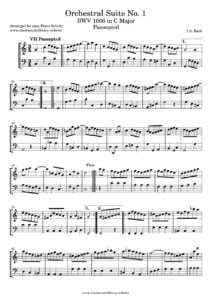 |
|
| Bach, J.S. Arioso For Piano Solo BWV 156 |
 |
|
| Bach, J.S. For Electric Guitar [Guitar SongBook] |
 |
Bach, J.S. For Electric Guitar |
| Bach, J.S. Myra Hess Chorale from Cantata 147 Jesu Joy Of Man’s desiring Hess Myra piano solo Arrangement |
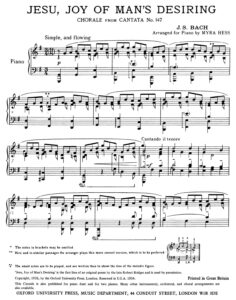 |
|
| Bach, J.S. – Jesus bleibet meine Freude Guitar arr. Jesu, Joy of Man’s Desiring Cantata Nr. 147.mscz | ||
| Bach, J.S. – Jesus_bleibet_meine_Freude_Cantata_Bwv147_10_Choral SATB with Piano by Johann_Sebastian_Bach.mscz | ||
| Bach, J.S. – Toccata and Fugue in D Minor (Piano Solo) |
 |
|
| Bach, J.S. Arioso (Guitar) from Cantata BWV 156 Guitar arr. by Per Orlov Kindgren |
 |
|
| Bach, J.S. Awake, tu us the Voice is calling – Wachet Auf, ruft uns die Stimme Piano solo arr. (Borwick) |
 |
|
| Bach, J.S. Chorale from Cantata 147 Jesu Joy Of Man’s desiring Easy piano solo Arr. |
 |
|
| Bach, J.S. Dinu Lipatti Pastorale in F ( Piano solo transcription) |
 |
|
| Bach, Johann Sebastian (bio book LUX-Lesebogen) (Deutsch-German) Biography |
 |
|
| Bach, JS Partitas Partita 1 |
 |
|
| Bach’s Well-tempered Clavier The 48 Preludes and Fugues (Book ) David Ledbetter |
 |
|
| Bachianas Brasileiras No. 5 (Heitor Villa-Lobos) | ||
| Bachianas Brasileiras No. 5 (Heitor Villa-Lobos) 2 pianos | ||
| Back To The Future Music from the Motion Picture Soundtrack Piano Vocal guitar |
 |
Back To The Future |
| Backstreet Boys – All I Have To Give | ||
| Backstreet Boys – As Long As You Love Me | ||
| Backstreet Boys – Drowning | ||
| Backstreet Boys – How Did I Fall In Love With You | ||
| Backstreet Boys – I Need You Tonight | ||
| Backstreet Boys – I Want It That Way | ||
| Backstreet Boys – Incomplete | ||
| Backstreet Boys – Quit Playing Games With My Heart | ||
| Backstreet Boys – Show Me The Meaning Of Being Lonely | ||
| Backstreet Boys As Long As You Love Me |
 |
|
| Backstreet Boys Backstreets Back |
 |
|
| Backstreet Boys Black Blue |
 |
|
| Backstreet Boys Drowning |
 |
|
| Backstreet Boys Everybody |
 |
|
| Backstreet Boys I Want It That Way |
 |
|
| Backstreet Boys Shape Of My Heart |
 |
|
| Baden Powell Manha De Carnaval Guitar Tablature Tabs |
 |
|
| Baden Powell – So Por Amor (Guitar arr. sheet music with TABs) | Baden Powell – So Por Amor (Guitar arr. sheet music with TABs) | |
| Baden Powell – Samba Do Aviao (Jobim) Guitar arr |
 |
|
| Baden Powell – Samba Em Preludio Guitar TAB |
 |
|
| Baden Powell – Serenata Do Adeus Guitar TABs |
 |
|
| Baden Powell Complete Brazil On Guitar transcriptions with Tablature |
 |
Baden Powell complete sheet music |
| Baden Powell Contemporary solo guitar (Book In Japanese) |
 |
|
| Baden Powell Prelude In A Minor (guitar) |
 |
|
| Baden Powell Retrato Brasileiro Choro Lento (Guitar) |
 |
|
| Baden Powell Songbook – Volume 1 (Guitar) |
 |
Baden Powell 1 |
| Baden Powell Songbook – Volume 2 (Guitar) |
 |
Baden Powell 2 |
| Baden Powell Songbook Volume 3 (Guitar) |
 |
Baden Powell songbook 3 |
| Badfinger – No Matter What |
 |
|
| Baghdarsaryan, Eduard 24 Preludes For Piano |
 |
|
| Baker’s Biographical Dictionary Of Popular Musicians 1990 Complete Vol 1 A L and Vol 2 M Z |
 |
|
| Balada Para Alessandro (Raul Di Blasio) | ||
| Balázs Havasidom Freedom Piano Solo Sheet Music |
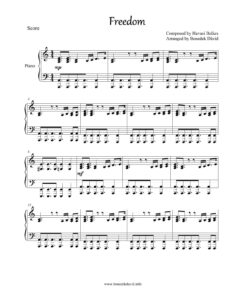 |
|
| Ballad No Name (William Joseph) | ||
| Ballade No. 1 In G Minor (Musescore File).mscz | ||
| Ballads Big Book Of Ballads 2nd Edition Piano Vocal Guitar |
 |
Ballads Big Book Of Ballads 2nd Edition Piano Vocal Guitar |
| Ballads For Classical Guitar |
 |
Ballads For Classical Guitar |
| Ballads Really easy piano (24 great songs) |
 |
Ballads Really easy piano (24 great songs) |
| Ballads The Big Book Of Ballads 3rd Edition Piano Vocal Guitar |
 |
Ballads The Big Book Of Ballads 3rd Edition Piano Vocal Guitar |
| Bambina (Lara Fabian) | ||
| Banana Boat Day-O – Guitarr Arr. With Tabs (Traditional Jamaican Folk Song (Sheet Music) |
 |
|
| Banana Boat Day-O – Guitarr Arr. With Tabs (Traditional Jamaican Folk Song (Sheet Music)) (Musescore File).mscz | ||
| Banana phone (Raffi) | ||
| Bangles – Eternal Flame | ||
| Bar Piano Susi’s – Band 1 – Swing Evergreens and Pop Classics by Susi Weiss |
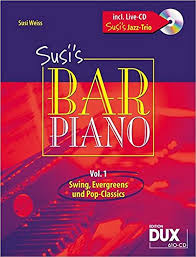 |
Bar Piano Susi’s – Band 1 – Swing Evergreens and Pop Classics by Susi Weiss |
| Bar Piano Susi’s – Band 2 – Swing Evergreens and Pop Classics by Susi Weiss |
 |
Bar Piano Susi’s – Band 2 – Swing Evergreens and Pop Classics by Susi Weiss |
| Bar Piano Susi’s – Band 3 – Swing Evergreens and Pop Classics by Susi Weiss |
 |
Bar Piano Susi’s – Band 3 – Swing Evergreens and Pop Classics by Susi Weiss |
| Bar Piano Susi’s – Band 4 – Swing Evergreens and Pop Classics by Susi Weiss |
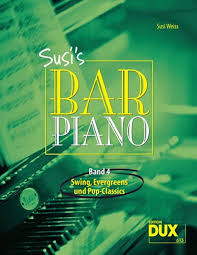 |
Bar Piano Susi’s – Band 4 – Swing Evergreens and Pop Classics by Susi Weiss |
| Bar Piano Susi’s Merry Christmas by Susi Weiss |
 |
Bar Piano Susi’s Merry Christmas by Susi Weiss |
| Bar Piano, Susi’s – Band 5 – Swing, Evergreens and Pop Classics by Susi Weiss |
 |
Bar Piano, Susi’s – Band 5 – Swing, Evergreens and Pop Classics |
| Barbara Livre D’or 18 Chansons Partition Musicale |
 |
Barbara Livre D’or 18 Chansons Partition Musicale |
| Barbara Arens Moonbeams |
 |
